1. Black Widow Spider
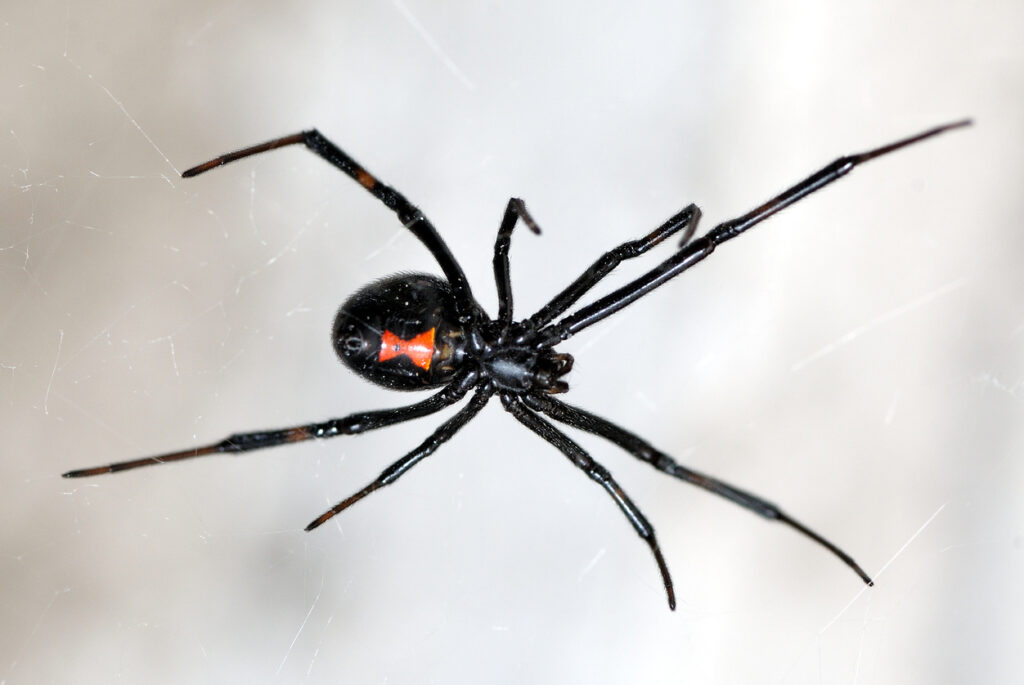
iStock
The black widow is the celebrity of scary spiders in America, infamous for its glossy black body and red hourglass marking. Found in dark, secluded spots like woodpiles, sheds, and yes, basements, this spider has venom that can wreak havoc on the nervous system. Symptoms include sharp pain, muscle cramps, nausea, and even difficulty breathing in severe cases. Black widows don’t go out of their way to bite humans but will defend themselves if disturbed. Always wear gloves when handling items stored in dark spaces, and if you suspect a bite, seek medical attention immediately—it’s always better to be safe.
2. Brown Recluse Spider
Animalia
The brown recluse is notorious for its violin-shaped marking on its back, earning it the nickname “fiddleback spider.” These reclusive arachnids love undisturbed places like closets, basements, and attics. A bite from a brown recluse might not hurt at first, but its venom can cause necrosis, resulting in painful, slow-healing sores. While fatalities are rare, untreated bites can lead to severe infections. They’re not aggressive but will bite when pressed against skin, like when you’re putting on clothes or shoes. If you live in an area where they’re common, shake out clothing and bedding regularly, and declutter storage areas.
3. Yellow Sac Spider

Animalia
Don’t let the pale, almost translucent appearance of the yellow sac spider fool you—they’re far from innocent. These nocturnal hunters are known to bite humans while they sleep, mistaking movement under the covers as a threat. Their venom can cause localized redness, burning pain, and itching, sometimes mistaken for a bee sting. Yellow sac spiders build small silk sacs, often tucked into ceiling corners, closets, or behind furniture. Though their bites rarely cause long-term harm, they can be extremely irritating. To avoid encounters, clean frequently and seal cracks or gaps in walls and windows where they might sneak in.
4. Hobo Spider

Animalia
The hobo spider is often confused with the brown recluse, but it lacks the violin marking. Common in the Pacific Northwest, it builds funnel-shaped webs in basements, crawl spaces, and outdoor crevices. Though not overly aggressive, its bite can result in redness, swelling, and slow-healing wounds. Early symptoms may mimic a mild bee sting, but complications can arise if left untreated. The hobo spider’s tendency to build webs in human dwellings makes it a frequent basement visitor. If you notice these webs or suspect a bite, keep the area clean and consider calling pest control to remove potential nests.
5. Tarantula
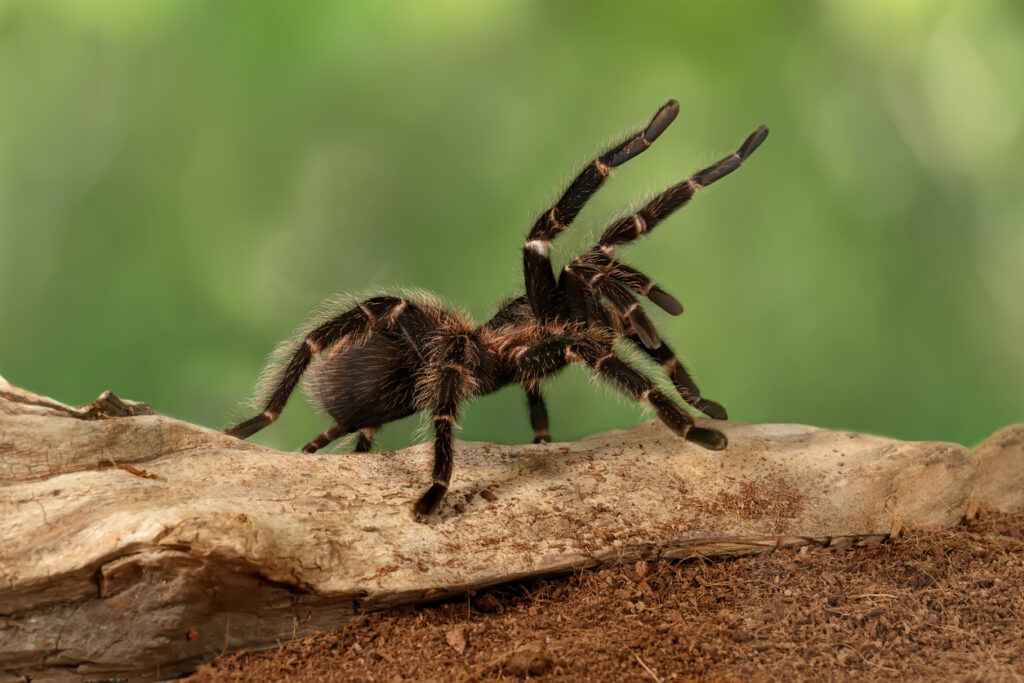
iStock
Tarantulas might not be your typical basement spider, but in states like Texas, Arizona, and California, these hairy giants occasionally find their way into homes. While they look intimidating, their bite is rarely dangerous to humans—less potent than a bee sting. However, their hairs can irritate the skin or eyes if they feel threatened and kick them off as a defense mechanism. Tarantulas are more active at night, often hunting small insects or taking refuge in dark, quiet spaces. They’re unlikely to bite unless provoked, but if you encounter one, admire it from a distance or carefully relocate it outdoors.
6. Wolf Spider
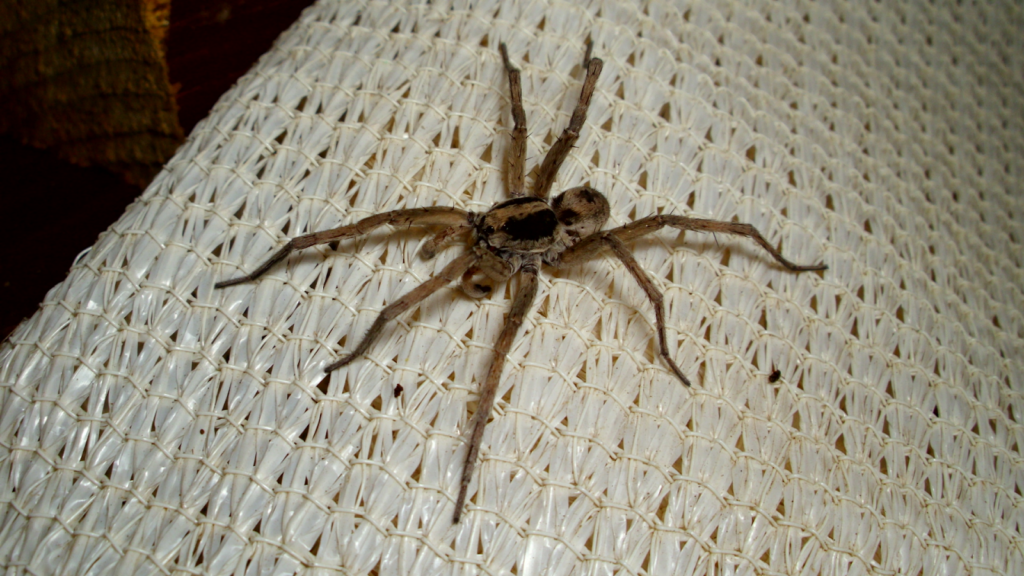
Wikimedia Commons
The wolf spider’s sheer size and hairy body make it one of the scarier-looking spiders, but they’re more bark than bite. Found in basements, garages, and other ground-level spaces, these hunters don’t spin webs but chase their prey. If cornered, a wolf spider may bite, causing minor swelling and redness. Though harmless to most people, their sudden darting movements can make them seem more menacing. To avoid encounters, keep basements clean, eliminate clutter, and seal entry points. Remember, they’re actually beneficial in controlling other pests in your home, so a gentle relocation outdoors might be all that’s needed.
7. Southern Black Widow

Wikimedia Commons
The southern black widow is nearly identical to its northern cousin, with the same shiny black body and red hourglass marking. Found primarily in the southeastern U.S., this spider is notorious for its potent neurotoxin. Bites can cause severe muscle pain, cramping, and even systemic reactions like fever or high blood pressure. Southern black widows often hide in outdoor structures like sheds, mailboxes, or woodpiles but may move indoors during colder months. Keep an eye out for their messy webs in dark, low-traffic areas, and always exercise caution when working in spots where they might be hiding.
8. Red Widow Spider
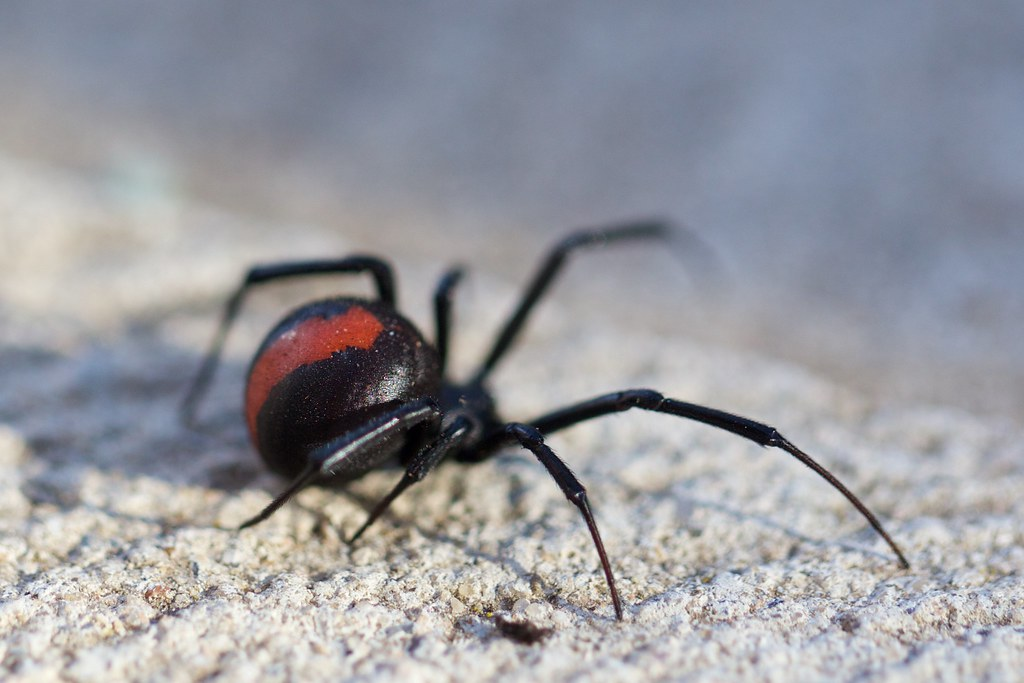
Flickr
The red widow is a striking but rare spider, found mostly in Florida’s sandy scrublands. Its bright red body and greenish-black abdomen set it apart from its black widow cousins. While it’s less aggressive than other widows, its venom is just as potent, potentially causing severe muscle cramps, nausea, and intense pain. Red widows aren’t as likely to be found indoors but could enter homes close to their natural habitats. Their vivid coloration is a warning sign, so if you see one, don’t try to handle it. Instead, let a professional deal with it safely.
9. Brown Widow Spider
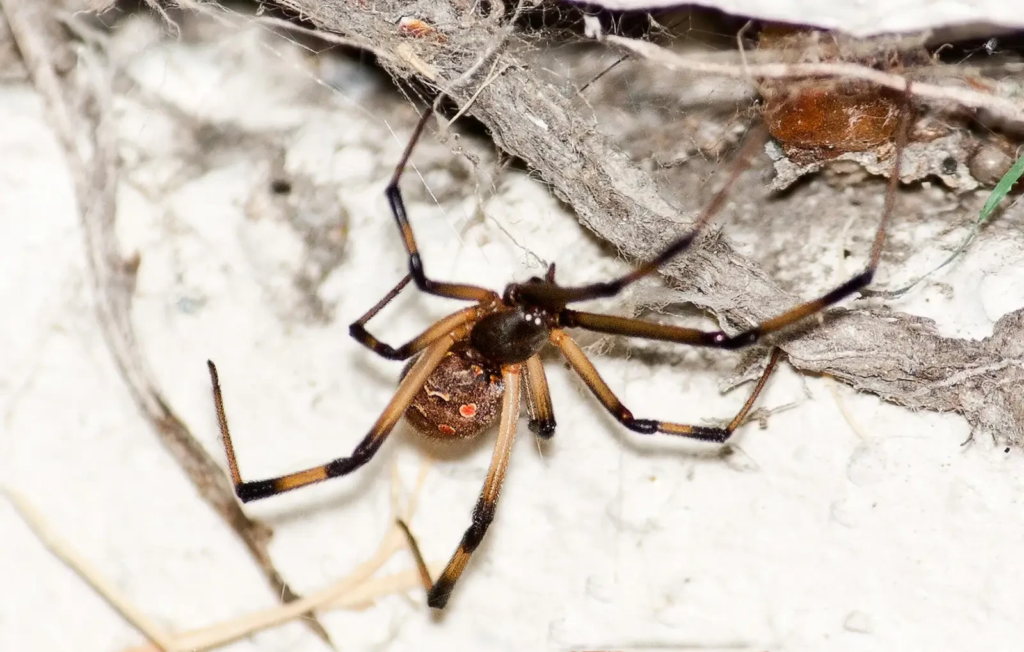
Animalia
Often overshadowed by its black widow cousin, the brown widow is a venomous spider with a distinct tan to brown coloration and orange or yellow hourglass marking. These spiders are less aggressive but still pack a venomous punch, capable of causing muscle spasms, localized pain, and mild nausea. Brown widows often lay spiky egg sacs in sheltered spots like patio furniture, window frames, or under eaves. While their bites are less severe than black widows, they can still cause discomfort, especially in sensitive individuals. Regularly inspect outdoor furniture and storage spaces to avoid surprise encounters with this sneaky spider.
10. Arizona Brown Spider
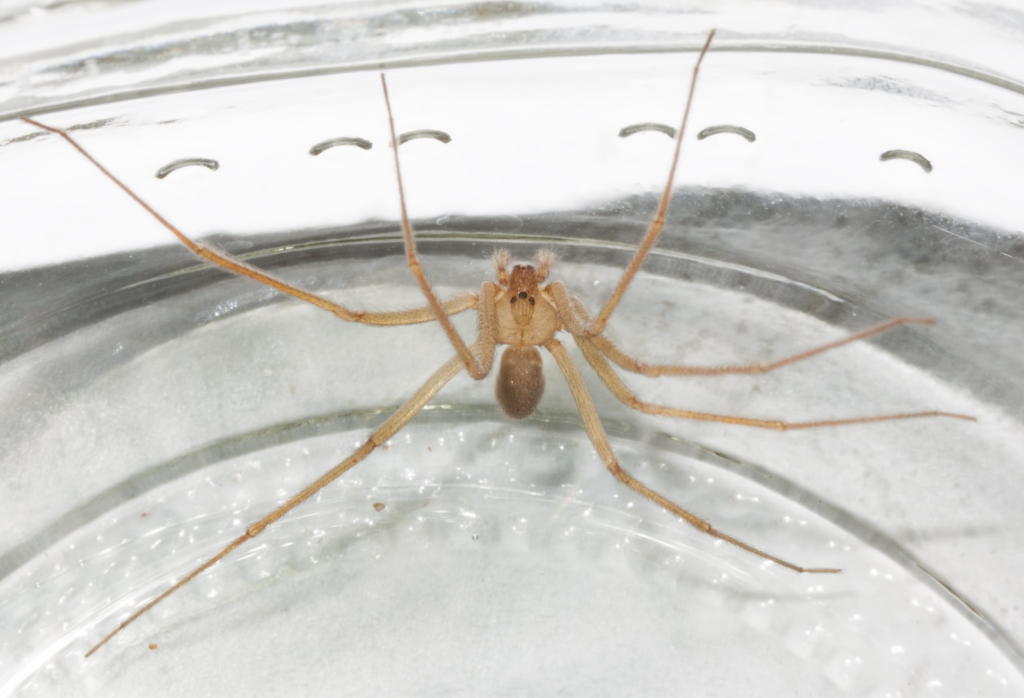
Wikimedia Commons
Closely related to the brown recluse, the Arizona brown spider inhabits hot, arid regions in the southwestern U.S. Known for its light brown body and subtle markings, it often hides in basements, attics, and dark corners. Its bite is dangerous, capable of causing necrotic lesions similar to the brown recluse. While these spiders are shy and tend to avoid human contact, accidental encounters can occur when reaching into storage areas. Decluttering and wearing gloves during cleanup can help reduce your chances of getting bitten. If you suspect an Arizona brown spider bite, seek medical attention promptly to prevent complications.
11. Black and Yellow Garden Spider

Flickr
Though primarily an outdoor spider, the black and yellow garden spider occasionally wanders into homes. Recognized by its vibrant black-and-yellow pattern and large orb-shaped webs, it’s more startling than dangerous. Their bite is mild, causing slight redness and pain comparable to a bee sting. These spiders are beneficial for controlling garden pests but may spin webs near basements, garages, or windows. While they pose minimal risk to humans, they can still give you a scare if you unexpectedly find one indoors. If you want to keep them out, ensure windows and doors are properly sealed, especially in late summer.
12. Grass Spider
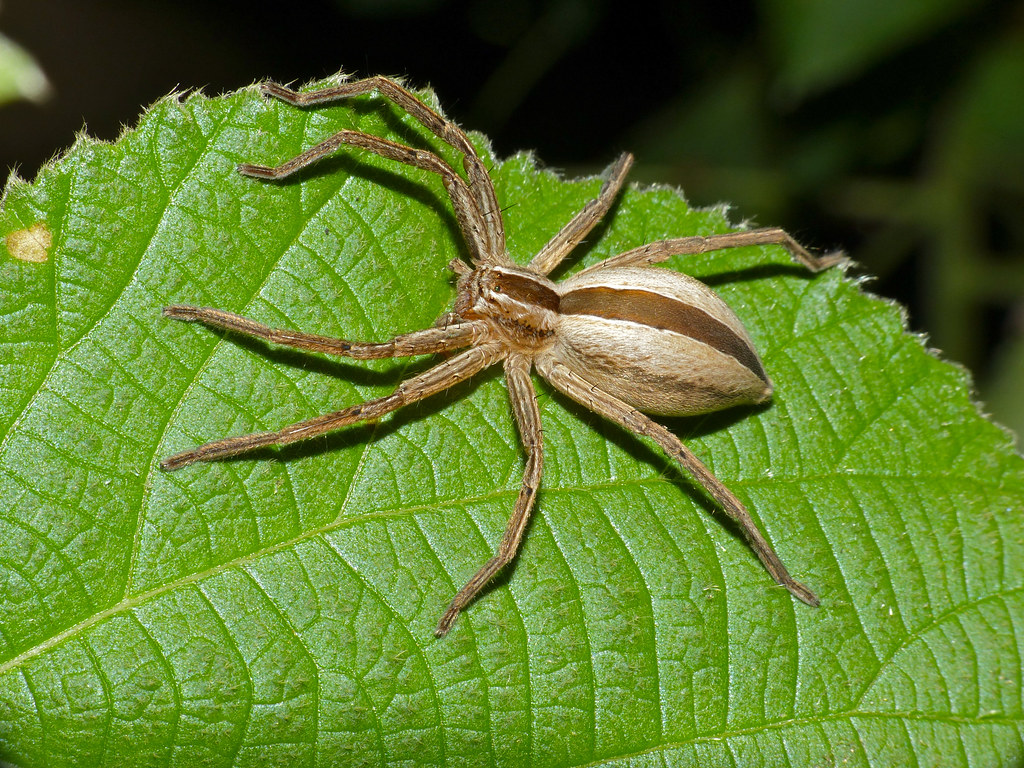
Flickr
Grass spiders are speedy little arachnids that build funnel-shaped webs in corners and dark spaces. They’re often mistaken for hobo spiders but are much less dangerous. Grass spider bites are rare and typically result in mild irritation or redness at most. These spiders are more interested in catching insects than humans, but their webs can become an annoyance, especially in basements or garages. Regular cleaning and vacuuming can help discourage them from setting up shop in your home. Despite their intimidating speed, grass spiders are harmless helpers when it comes to pest control.
13. Six-Eyed Sand Spider

Wikimedia Commons
While rare in the U.S., the six-eyed sand spider is a potentially dangerous arachnid known for its potent venom. Native to desert regions, it occasionally appears in southern states. This spider is highly reclusive, using its natural camouflage to hide in sand or dusty areas. Its bite is uncommon but can cause severe symptoms, including necrosis and internal bleeding. Thankfully, human encounters are rare, but if you’re traveling in desert environments or live in areas near dunes, exercise caution. Wearing boots and shaking out clothing and gear can help you avoid unwanted run-ins with this stealthy spider.
14. Parson Spider

Flickr
Parson spiders are small but quick-moving, making them an unsettling sight indoors. These nocturnal hunters often hide under furniture, in closets, or along basement walls during the day. Their bite is not medically significant but can cause localized pain, swelling, and itching. Parson spiders are more likely to scurry away than bite, but accidental encounters can occur if they’re trapped against the skin. To minimize encounters, clean your home regularly and vacuum corners and crevices where they might hide. These spiders are common in many parts of the U.S., so don’t be surprised if you find one darting across your floor.


